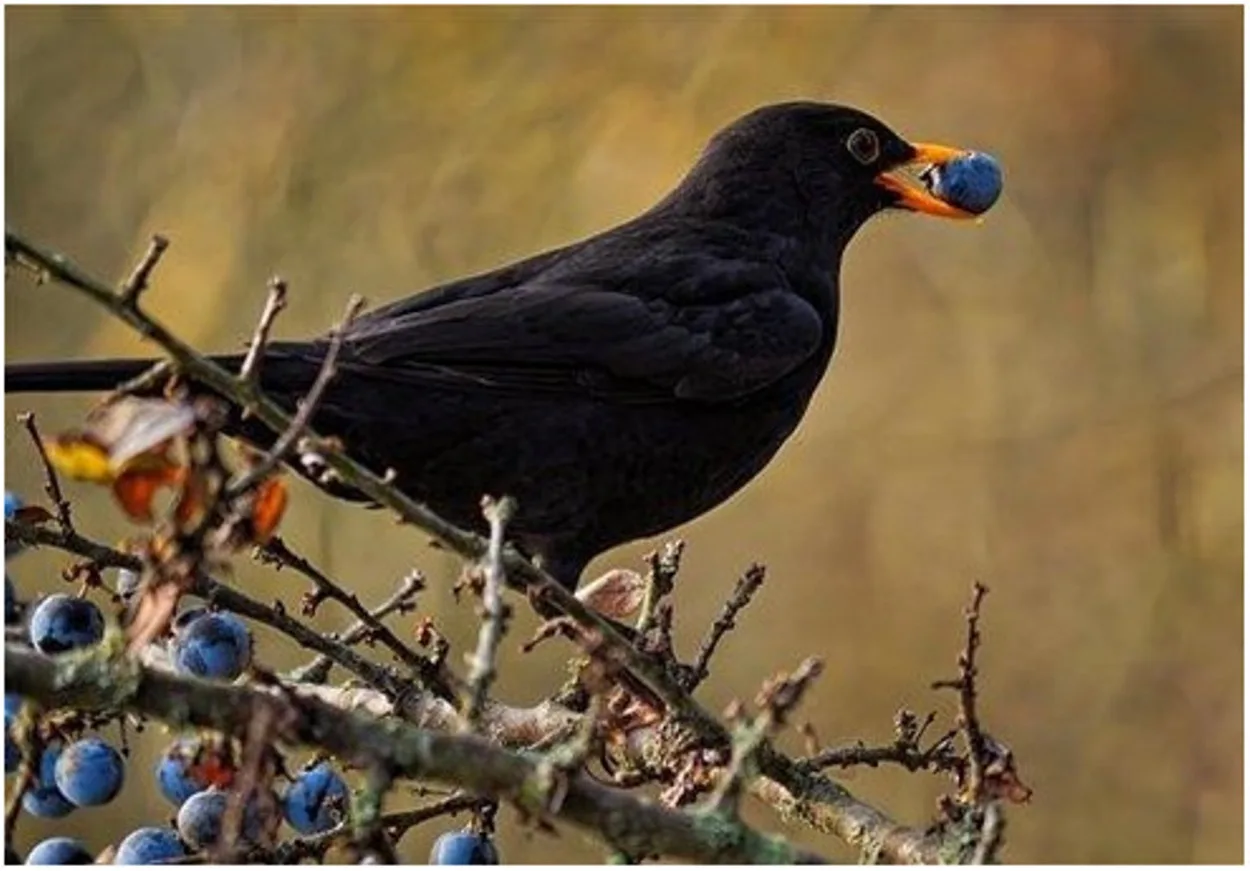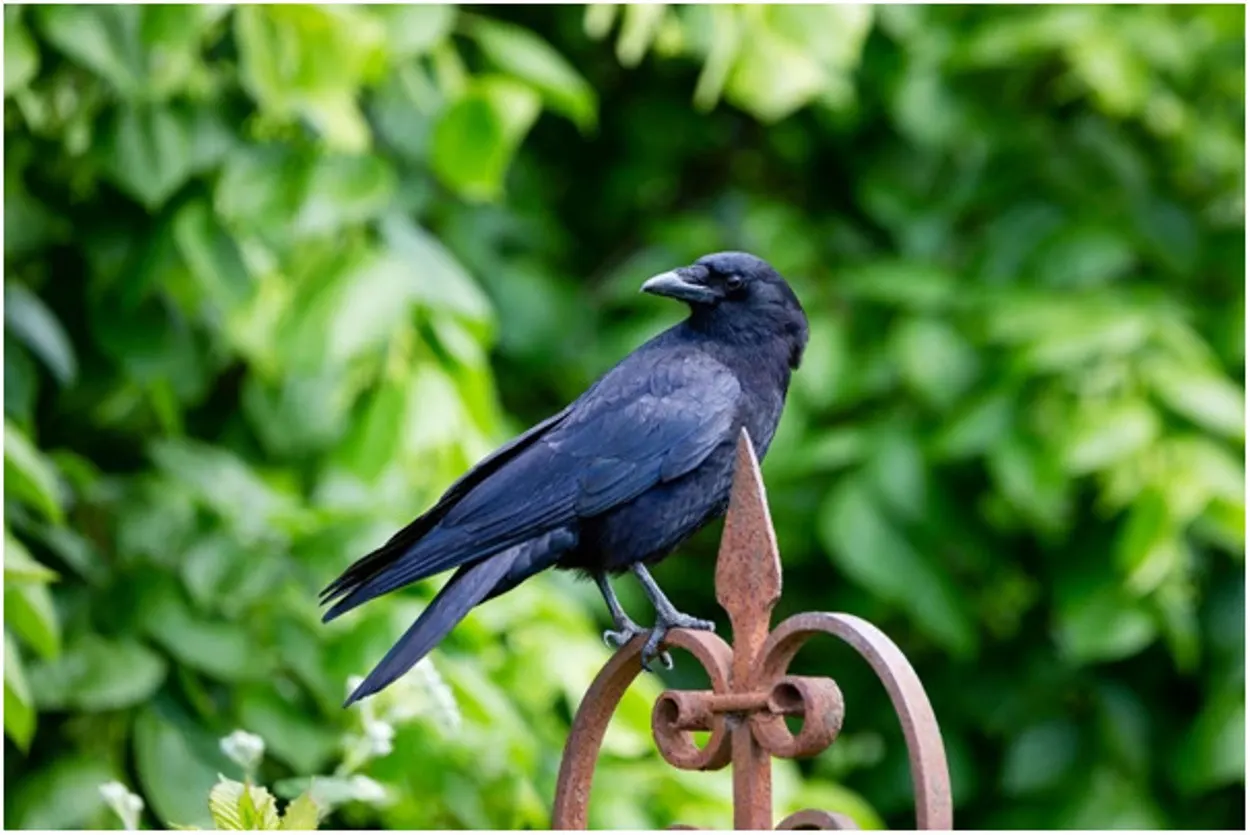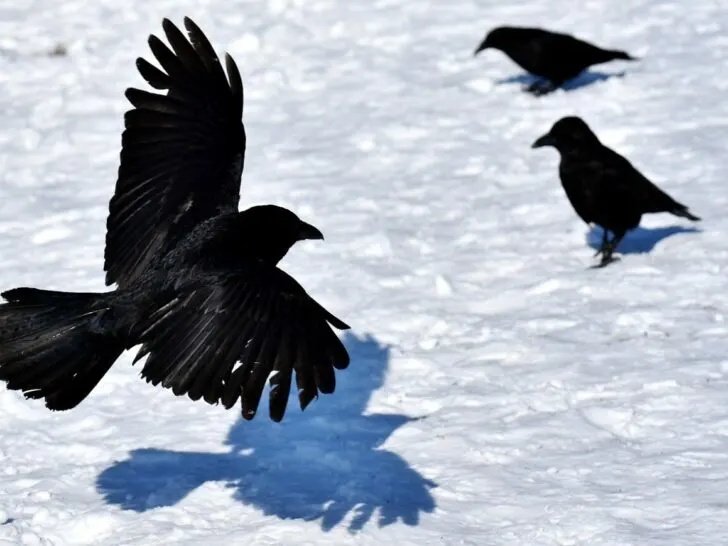Birds are the most beautiful creatures in nature. They are warm-blooded vertebrates with features, wings, and toothless but very sharp and strong beaks.
Birds have hollow bones and air sacs, which reduce their weight and help them in flying. They breathe through their lungs.
Birds are of two types i.e running birds and flying birds, like kiwi, rheas, ostrich, emus, and road runners, are examples of running birds. They have weak wings but solid legs and run very fast.
Crows, eagles, sparrows, pigeons, blackbirds, and ravens are flying birds. They lay hard shell eggs and have a very high metabolic rate.
While ravens have wedge-shaped tails that are more noticeable when flying, crows have rounded or squared-off tails. Crows have a smaller bill and are smaller than ravens. Crows and ravens are both totally black, down to their feet and beaks.
Birds have a compound and well-developed nervous system. Many birds are recognized to be extremely intelligent and teachable.
Let’s get into the details!
Ornithology
It is the branch of zoology, and in this, we can briefly study birds and their natural habitats. The word ornithology comes from a Latin word that means bird science.
Types of Birds
There are over 1000 species of birds all over the world, and all are different from each other. Scientist groups them into 30 categories. Some of them are:
- Diurnal birds of prey (Accipitriformes)
- Waterfowl birds (Anseriformes)
- Hummingbirds &swifts (Apodiformes)
- Kiwis & extinct birds (Apterygiformes)
- Horn bills & hoopoes (Coraciiformes)
- Corvidae (Oscine passerine birds)
- Pigeon and dodos (Columbiformes)
- Emus & cassowaries (Casuariiformes)
- Night jars, frog mouths & oil birds (Caprimulgiformes)
Now, I will discuss the difference between crows, blackbirds, and ravens.
Crow and Raven belong to the same order Corvidae, also known as the Crow family. There are almost 133 members in this family. But the blackbird is a part of the Turdidae family.
Blackbirds

Scientific Classification
- Kingdom: Animalia
- Phylum: Chordata
- Class: Aves
- Order: Passeriformes
- Family: Turdidae
- Genus: Turdus
- Species: T. merula
Description
The blackbird is an elegant bird with a melodious voice, and these birds live close to humans.
Common blackbirds were first introduced to Melbourne (Australia) in the 1850s. It mainly lives in Europe, North, South, and Central America. They are often found in Africa and Canada.
Different species have diverse ranges and distributions. Some birds migrated seasonally, and some lived in the same place, depending on their region.
They successfully live in bushland habitats. You mostly find blackbirds in orchards, the countryside, and parks.
Measurements
- Life span: 2.5 – 21 years
- Weight: 80 – 120 g
- Length: 24 – 25 cm
- Wings: 34 – 38 cm
Physical Features
As the name indicates, male blackbirds are black with bright orange-yellow beaks and distinguishing yellow eye rings. However, females are dark brown with lighter brown streaks on the breast and brown beaks.
Diet of the Blackbirds
The common blackbirds are omnivores which means they consume both plants and animals. They eat insects, earthworms, spiders, seeds, grapes, cherries, apples, blue barriers, and strawberries.
Breeding Behaviors
The blackbird builds their nest in a cup shape, with dry grass, mud, and some fine grass. It usually places this in shrubs or low bushes, but they also use tree holes.
- The breeding period of blackbirds starts from March to July.
- The average clutch size is 3-5, and their chicks can hatch in 13 to 14 days.
- Their chicks can leave the nest in 9 to 12 days and begin learning to fly.
Ravens

Scientific Classification
- Kingdom: Animalia
- Scientific name: Corvus Corax
- Phylum: Chordata
- Class: Aves
- Order: Passeriformes
- Family: Cervidae
- Genus: Corvus
Description
The raven is a large bird of the Cervidae family. They are social birds with complex hierarchies. Ravens also imitate sounds from their environment, including human and animal noises.
They are extraordinary and intelligent birds. The raven’s intelligence is deceptive in its ability to communicate a message through sound. It can threaten, taunt, and cheer other birds by changing their sound.
Physical Features
The ravens are substantial black birds with thick necks and particularly shaggy throat feathers. They have solid, large feet and long, dark, slightly curved beaks.
Ravens are close similarities to the common crow. Its feathers are glossy black, and during the sunlight, it can show purplish radiance.
Measurements
Life span: 13 – 44 years
Weight: 0.7 – 2 kg
Length: 54 – 67 cm
Wingspan: 115 – 150 cm
Habitat
The ravens are widely distributed worldwide; they cover a large area of the northern hemisphere, Arctic regions, northern Europe, North and South America, and North Africa.
They are commonly found in woodlands, coniferous forests, beaches, islands, sagebrush, mountain, deserts, and rocky coastline.
Diet
Ravens are omnivores and highly opportunistic.
They will eat small animals, eggs, grasshoppers, beetles, scorpions, buds, cereals, grains, berries, and fruits. They also consume animals and human wastage.
Reproduction and Development
The common ravens are primarily monogamous. Their nest is large, bulky, bowled, shaped, and made with sticks and twigs.
Female ravens will lay about four to seven eggs at once, and their babies hatch in 20 to 25 days.
Crows (Indian House Crow, Ceylon, Colombo Crow)

Scientific Classification
- Kingdom: Animalia
- Phylum: Chordata
- Class: Aves
- Order: Passeriformes
- Family: Corvidae
- Genus: Corvus
- Species: Corvus splendens
Description
The house crows are a common bird of the crow family. They are initially from Asia but are now found in many regions of the world, introduced in Central Thailand, Maldives, Mauritius, Mideast east, and several islands.
House crows are highly associated with humans; they live in cities, towns, and villages. In other words, these birds like to live near humans. They are intelligent like their other family members, ravens and western jackdaws.
Physical Features
House crows are comparatively small, with slim bodies and long legs.
The forehead, back, wings, tail, and beaks are luxuriously glossed black, but the neck and lower breast are softer (grey tone) in color. The bill is black and strongly curved. Masculine and female crows look similar, but males are slightly bigger.
Measurements
- Population size: Unknown
- Life span: 6 years
- Weight: 250 – 340 g
- Length: 41- 45 cm
- Height: 17.5 – 19 inches
Diet
House crows are omnivores like other birds: they eat crops, leftovers, sewage, chicken, eggs, lizards, small mammals, fruits, cereals, insects, and nectar.
Nesting and Breeding
The common crows are generally monogamous. Their breeding spell depends on the location.
Mostly they are bred during the wet season; in India, Pakistan, Bangladesh, and Nepal, it is from April to June. While in East Africa, Maldives, and Mauritius, it is between September to June.
Common crow’s nest is close to human occupancy, they build untidy nests on trees, but their nest is often found on buildings, electric poles, and street lamps.
- Incubation period: 15-17 days
- Independent age: 21-28 days
- Baby caring: 3-5 eggs
Difference Between Blackbirds, Ravens, and Crows
| Features | Blackbird | Raven | Crow |
| Size | Minor in size, approx. 17 inches long | More significant, 24-27 inches long | 17 to 19 inches long |
| Tail | They have long diamond shape tails. | They have wedge-shaped tails. | They have fan-shaped tails. |
| Feathers | Type: primaries Length: 10.6 cm | Type: primaries Length: 32.2 cm | Type: primaries Length: 35.6 cm |
| Bill | Small, flat, yellow-orange beak | More significant, robust, and curved | Black curved solid beak |
| Wings | Dull and splayed, finger-shaped wings; wingspan 32-40 inches | They have pointed wings and a wingspan of 45to 55inches. | Wingspan 17 inches |
| Life Span | 8 years | 30 years | 6 years |
| Habitat | They live in gardens, hedges, forests, and towns. | Extremely common in woodland, forest, and rocky coastline | They live in villages and towns. They can almost be found in human habitation. |
| Diet | They are omnivores that eat insects, caterpillars, beetle, fruits, and cereals. | They are also omnivores and eat small invertebrates like earthworms and fruits. | They eat seeds, fruits, grains, nectar, berries, eggs, fish, insects, and leftovers. |
Conclusion
- There are many differences between blackbirds, ravens, and crows, however, there are some similarities as well.
- Crows and blackbirds are smaller than ravens.
- Both crows and ravens are highly adaptive birds, but ravens are more intelligent and thoughtful than them, the ravens also have an incredible quality of impersonating their surroundings.
- Ravens live longer than crows and blackbirds.
- Common ravens have longer wings than crows and blackbirds.
- A significant difference between them is the heaviness of the bills. Crow has a dainty beak, whereas ravens have a much thicker and heavier beak, and blackbirds have a solid but small bill.
- The crow will generally have a tail that looks like a hand fan, where all the feathers are about the same length. In contrast, ravens have pointed tails and blackbirds have diamond shape tails.

